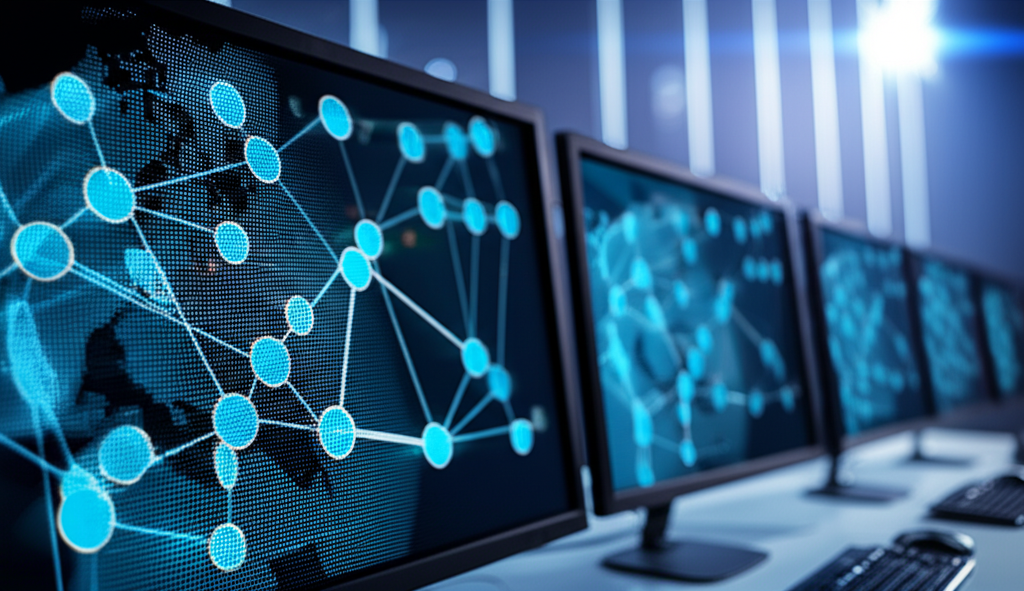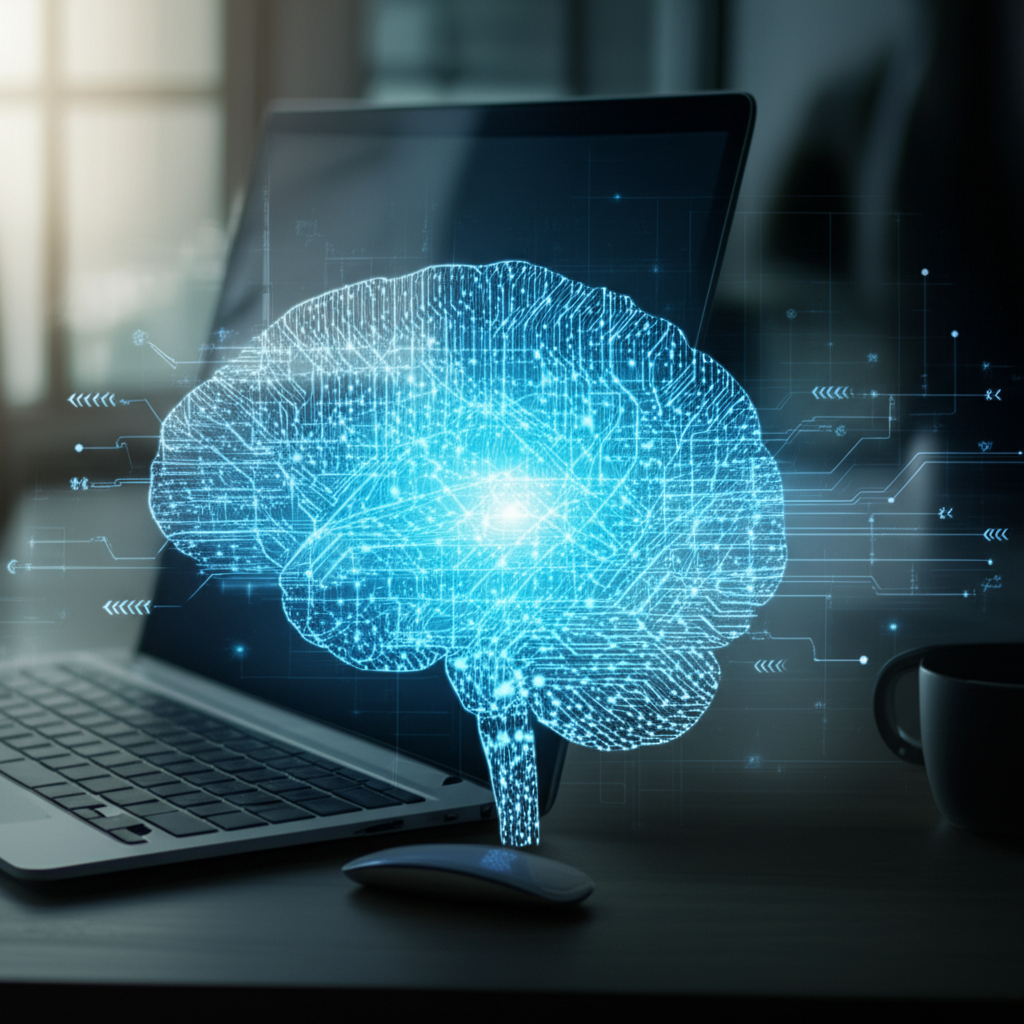Introduction
Artificial neural networks, often regarded as the backbone of modern artificial intelligence, are making strides toward mimicking the complex workings of the human brain. This development holds immense significance as it promises to revolutionize industries ranging from healthcare to autonomous driving. The underlying challenge is replicating the biological intricacies of human cognition within artificial structures, a feat that continues to intrigue scientists and engineers alike. As businesses increasingly look to AI for competitive advantage, understanding neural networks becomes crucial
In this article, we aim to uncover how artificial neural networks echo the architecture of the human brain. Readers will come away with insights into the core concepts of neural networks, their practical applications, challenges encountered, and emerging solutions. These details will provide a comprehensive understanding of how artificial intelligence is shaped and utilized across various sectors, offering practical solutions to current technological questions.
Foundation of Neural Networks
Sure, here are the bullet points specifically tailored for the “Introduction” section in WordPress HTML format:| Core Concept | Explanation & Examples | Tools & Platforms | Implementation Steps | Best Practices |
|---|---|---|---|---|
| Neural Architecture | Neural networks consist of interconnected nodes organized in layers: input, hidden, and output. Each node simulates a neuron in the human brain, processing inputs and delivering outputs. Complex networks might include hundreds of layers, exemplified by Google’s BERT for NLP. These architectures can analyze images, text, or sound by extracting feature hierarchies. | TensorFlow, Keras, PyTorch. These platforms provide predefined layers and customization options for building tailored architectures. |
1. Select a platform: e.g., TensorFlow for extensive library support. 2. Define network layers: input, convolutional, fully connected, etc. 3. Compile model with defined loss and optimizer functions. |
Start with simpler architectures and gradually increase complexity. Monitor overfitting risk through validation datasets. |
| Training Algorithms | Training involves updating the network’s weights based on input data to minimize prediction error. Backpropagation with gradient descent is standard, adjusting weights via error gradients. Use-case: Google’s DeepMind employs these in AlphaGo for learning complex game strategies. | Scikit-learn, Keras. Offers plugins for a variety of learning algorithms like stochastic gradient descent and Adam optimizer. |
1. Load and preprocess data, ensuring normalization. 2. Select an optimizer suited for the data scale. 3. Train model iteratively and adjust hyperparameters like learning rate. |
Utilize automatic differentiation tools integrated in platforms to simplify gradient calculations. |
| Activation Functions | These functions control the output of each neuron, crucial for learning and network depth. Sigmoid, ReLU, and Tanh are common. For example, ReLU aids in quickly converging deep networks by minimizing gradient vanishing. | Deep learning libraries like PyTorch offer a rich variety of activation functions to integrate into network models. | 1. Evaluate function impact during early testing tuns. 2. Implement ReLU in hidden layers for non-linear adaptation. 3. Experiment with activation combinations for optimal results. |
Always monitor for exploding gradients in deep networks when deciding activation functions. |
| Data Preprocessing | Ensure data is clean and formatted for model consumption. Techniques like normalization (bringing data into uniform scale) and encoding categorical data enable robust model input. For instance, image datasets might involve resizing and augmentation. | Pandas for data handling, OpenCV for image preprocessing ensures data readiness for training. | 1. Data inspection for errors and missing values. 2. Normalize inputs to maintain scale uniformity. 3. Use augmentations for image datasets to boost model generalization. |
Balance dataset using oversampling or undersampling to address class imbalance. |
| Loss Functions | These functions measure how well the network’s predictions align with actual results, guiding optimization. MSE for regression and Cross Entropy for classification are popular choices, facilitating minimum error during backpropagation. | Keras offers a range of loss function implementations, simplifying integration into custom models. | 1. Identify appropriate loss function based on task type. 2. Integrate function during model compilation phase. 3. Regularly evaluate during training for adjustments. |
Select functions complementing your output layer configuration to ensure cohesive learning objectives. |
| Regularization Techniques | Combat overfitting using Dropout, L1/L2 penalties. Dropout temporarily drops units, adding randomness; for instance, Dropout layers in neural networks can significantly enhance generalization in large architectures like GANs. | Implement with libraries like TensorFlow to ensure custom models remain efficient and effective. | 1. Identify risk of overfitting through loss/accuracy plot divergence. 2. Experiment with Dropout rates, typically starting between 0.2 and 0.5. 3. Apply regularization penalties as small constants to weights. |
Regularly cross-validate model performance to monitor and adjust regularization impact. |
| Performance Evaluation | Empower neural networks with effective evaluation methods; accuracy, precision, recall, and F1-score are standard metrics. In NLP models, BLEU scores for translation tasks highlight predictive quality. | Sklearn for standard evaluation metrics; blue library for special cases like language processing tasks. | 1. Define evaluation criteria aligning with model objectives. 2. Generate and evaluate predictions on test datasets. 3. Adjust modeling strategy based on metric outcomes. |
Periodically reevaluate metrics post-deployment to ensure model robustness in dynamic environments. |
Key focal points of the Introduction to Artificial Neural Networks include:
The Biological Inspiration
Artificial neural networks draw inspiration from the human brain’s neurobiological processes. At their core, they aim to simulate how neurons and synapses work together to process information. Each neuron receives inputs, processes them, and disseminates the results to other neurons, similar to passing signals in the brain. This structure allows neural networks to learn and adapt, forming the basis for their mimicking capabilities.
The essence of replicating these biological processes lies in layers of interconnected nodes: input, hidden, and output layers. These layers facilitate the transmission and transformation of data, akin to how sensory organs, central processing areas, and effectors function within human physiology. Additionally, the notion of synaptic weight in artificial neural networks captures the essence of synaptic strength modulation, an integral biological function governing the intensity of neural impulses.
Mathematical Underpinnings
The transformation from biology to technology is spearheaded by mathematical functions. Each neuron performs linear and nonlinear operations on the incoming data, mimicking the brain’s problem-solving approach. Activation functions, inspired by complex neuron firing patterns, determine whether a neuron should be activated, mirroring the all-or-nothing firing of neurons in the brain.
Feeding these artificial neurons are data sets that undergo rigorous processing. Techniques like forward propagation illustrate how inputs travel through neural layers to yield predictions, while backpropagation refines these predictions by adjusting synaptic weights based on mean squared errors. This feedback loop is critical in the learning process, simulating the adaptability of human cognition through repeated exposure and adjustment.
Real-World Applications
Healthcare Innovations
In healthcare, neural networks are driving breakthroughs in disease diagnosis and treatment planning. They process vast amounts of medical data to identify patterns and anomalies beyond human capability, leading to earlier and more accurate diagnoses. For example, convolutional neural networks (CNNs) are particularly adept at analyzing medical imaging, such as MRIs and CT scans, where they can detect minute changes indicating the early stages of a disease.
This unbiased analysis provided by neural networks assists in personalizing patient treatment. By evaluating factors like genetic predispositions and lifestyle, these models can suggest tailor-made treatment plans, optimizing outcomes. Researchers also leverage recurrent neural networks (RNNs) to predict patient responses to medication by considering historical health data, thus minimizing adverse effects.
- Foundational Concepts: Exploring how neural networks form the backbone of modern artificial intelligence initiatives.
- Significant Implications: Highlighting the potential impact on industries such as healthcare and autonomous technology.
- Core Challenge: Addressing the complexity of replicating human cognition within artificial systems.
- Strategic Importance: Emphasizing the necessity for businesses to understand neural networks for competitive advantage.
- Insightful Overview: Offering a comprehensive exploration of neural network architecture and its real-world applications.
Efficiency in Transportation
In the transportation sector, neural networks inform decision-making in autonomous vehicles. These networks process real-time data from sensors to assist vehicles in understanding their environment. They predict the movements of nearby entities and make split-second decisions aligned with safe driving protocols.
Moreover, neural networks improve traffic management systems by analyzing large datasets to predict congestions, thereby suggesting alternative routes. Traffic flow optimizers implemented using artificial neural networks reduce idle time and emissions, reflecting a tangible improvement in urban mobility and environmental health. As such, the integration of neural networks into transportation demonstrates their capability to augment decision-making processes across varying scales.
Technological Challenges
Data Quality Issues
One prominent challenge in deploying neural networks is the requirement for large, quality datasets. Inadequate or biased data can lead to skewed outcomes, undermining the reliability of network predictions. Machine learning practitioners emphasize the need for data preprocessing techniques to cleanse and standardize data, ensuring it is robust enough for accurate results.

Furthermore, data privacy concerns arise as networks require access to sensitive information, particularly in sectors like healthcare and finance. Establishing privacy-preserving protocols such as data anonymization and encryption is crucial to fostering trust and compliance with regulatory standards.
Computation and Energy Constraints
The computational power necessary to train complex neural networks is immense. High resource demands translate into significant energy consumption, posing a sustainability challenge. Advances in hardware, such as GPUs and TPUs, have addressed some efficiency issues, yet the environmental impact remains a pressing concern in broader AI applications.
Efforts to create more energy-efficient models have led to the development of sparse neural networks, which focus on essential connections, reducing unnecessary computational overhead. Similarly, the integration of neuromorphic computing, with its brain-inspired architecture, offers a potential breakthrough in overcoming these constraints by replicating the brain’s energy-efficient computation strategies.
Security Considerations
Vulnerability to Adversarial Attacks
Neural networks, while innovative, are subject to adversarial attacks, where slight input alterations by malicious entities lead to incorrect outputs. This vulnerability poses risks, particularly in applications like autonomous vehicles, where misclassification can lead to catastrophic outcomes. Researchers are actively developing adversarial training and robust model evaluation techniques to combat these vulnerabilities, ensuring resilience against such attacks.
Ensuring model robustness involves simulating potential attack scenarios during training to enhance resistance. Moreover, integrating threat detection mechanisms into AI systems can preemptively identify and mitigate breaches, safeguarding critical infrastructure. These protective strategies are crucial as neural networks become increasingly integral to critical systems across industries.
Ensuring Ethical Use
The pervasive influence of neural networks necessitates strict adherence to ethical standards. Unintended biases can arise from the sheer complexity and opaqueness of these networks, shaping skewed decision-making processes. As a result, transparency in model training and output reasoning is becoming pivotal to addressing ethical concerns.
OpenAI and other industry players advocate rigorous auditing protocols to assess network fairness and accountability. Developing interpretative tools that clarify model decisions is vital for building trust and enabling ethical compliance. Ensuring ethical integration into societal systems will be one of the most significant determinants of public acceptance of neural network technologies.
Conclusion
Through continuous advancements, artificial neural networks are paving the way for transformative technological innovation, closely mirroring the immense potential of the human brain. As we stand at the forefront of artificial intelligent development, it is critical to address the challenges of data quality, energy efficiency, and security to ensure sustainable and ethical implementation across industries. With these improvements, the promise of neural networks catalyzing revolutions in medicine, transportation, and more is achievable.

As sector leaders look to leverage these advanced networks, a focus on sustainable development and ethical practices will be essential for fostering trust and maximizing societal benefits. By doing so, businesses can harness the full potential of AI, translating brain-inspired processes into tangible outcomes conducive to progress and meaningful impact.
FAQs
What are artificial neural networks, and why are they significant?
Artificial neural networks are computational models inspired by the human brain’s structure and function. They consist of interconnected nodes, or ‘neurons,’ organized in layers that process information. These networks are significant because they are the foundation of modern artificial intelligence, enabling solutions across diverse industries like healthcare, autonomous driving, and more by mimicking human cognitive abilities and offering sophisticated data analysis and pattern recognition.
How do neural networks emulate the human brain’s processing?
Neural networks simulate the human brain’s processing by using layers of interconnected nodes that reflect biological neurons and synapses. Each network node performs computations on inputs and transmits the output across the network, similar to how neurons operate in the brain. The use of activation functions and synaptic weight adjustments helps in mimicking neuron firing and adapting to new information, making the networks capable of learning and decision-making.
What are some examples of neural network applications in healthcare?
In healthcare, neural networks analyze vast medical datasets for pattern recognition and anomaly detection, aiding in early and accurate diagnosis. For example, convolutional neural networks (CNNs) excel in processing medical images like MRIs and CT scans to identify disease indicators. They also assist in personalizing patient treatments by evaluating genetic and lifestyle factors and predicting medication responses, thus optimizing healthcare outcomes and minimizing adverse effects.
What challenges do neural networks face in implementation?
Neural networks face challenges such as the need for large, high-quality datasets to ensure reliable predictions. Data privacy and security are also significant concerns, requiring robust anonymization and encryption protocols. Additionally, the high computational power and energy consumption needed for training complex networks pose sustainability challenges. Efforts to develop energy-efficient hardware and sparse models are crucial to address these environmental concerns.
How can neural networks overcome security vulnerabilities?
Neural networks can address security vulnerabilities through adversarial training and robust evaluation techniques designed to withstand adversarial attacks. These attacks involve subtle input manipulations that lead to incorrect outputs. Incorporating threat detection systems, simulating attack scenarios during model training, and integrating robust testing mechanisms are vital for enhancing model resilience and ensuring the safe and effective deployment of AI technologies across critical sectors.

Leave a Reply